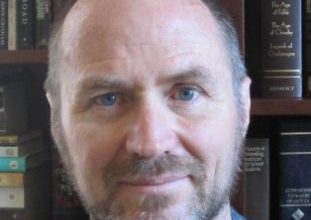ITS Director Keith Gremban on 5G Propagation
[powerpress]
This podcast with Keith Gremban is all about building 5G networks.
Keith is Director of the Institute for Telecommunication Sciences and Co-Director of the Center for Advanced Communications at NTIA, the arm of the Commerce Department that oversees federal use of radio spectrum. When he’s not coaching agencies on how to use their spectrum allocations more efficiently, he oversees applied research programs that enable private radio networks to deploy new systems more quickly and effectively.
A big part of that job is organizing the annual International Symposium on Advanced Radio Technologies (ISART). This international conference addresses a theme each year reflecting what the radio networking industry is grappling with, and today that’s how to build 5G networks.
A lot of planning goes into these networks, a good deal of which involves predicting how well radio waves of the chosen frequencies will travel over a given topography. For 5G, these predictions must be much more accurate than they’ve been for previous networks.
High Resolution Modeling
Keith says 5G modeling needs to be a lot more precise than the modeling for broadcast TV and radio was. When licenses allowed high power and signals propagated 100 miles, errors of a mile or two were no big deal.
But with 5G signals are only going to travel hundreds or (low thousands) of feet and interference can come from motor vehicle traffic, foliage, and human bodies. So it’s not enough to simply know where the hills are, we need to know about buildings and trees even what kind of windows the buildings have.
This gets especially dicey inside buildings. We’re used to modeling Wi-Fi in buildings, and we know it’s never been as accurate as we’d like. As far as radio signals can tell, humans are bags of salt water and millimeter waves would rather heat us up than pass through us.
New Sources of Information
While high-frequency radio waves introduce new problems for measurement and prediction, they also give us new tools for characterizing the environment. One of these is LIDAR (light detection and ranging). Think RADAR but with lasers instead of radio waves.
Not only do we use LIDAR in driverless cars, we use it for surveying. After the Colorado floods of 2014, the Corps of Engineers mapped a great deal of the state with LIDAR, building a high-res topographic map the likes of which we had never seen.
ITS has access to the Corps’ LIDAR maps; private firms are doing LIDAR mapping as well.
Analytical Tools
LIDAR and visual mapping (think Google Earth) give us more data, but data means nothing without analysis. So ITS, the academy, and industry are developing tools to figures out where antennas need to go based on this new data.
We’re not there yet with analysis, but conferences like ISART are bringing the minds together to speed up the development of the tools. Topographic LIDAR maps aren’t the end of the story, however.
High-quality, on-the-ground measurements are also necessary. These measurements need to conform to best practices and common formats to facilitate sharing, and everyone is working on this problem. ITS sees a big role for itself in developing these standards.
Making Corrections
So what happens after we gather LIDAR data, analyze it, measure propagation on the ground and then stand up networks? We find out where the coverage holes are, and try to figure out why we missed them in all the prior steps.
This knowledge ripples back into all the prior stages, so we get better at surveying, analyzing, and measuring. So networks get better, faster, and cheaper.
Costs of deployment for new networking technologies tend to decline over time as we learn how to avoid unnecessary redundancies. Deployment costs of fiber-to-the-home networks declined to about 20% of initial levels over the first three years of deployment.
And it doesn’t stop there: some of the learning leads to new civil engineering techniques that boost installation and maintenance costs even further.
On to IoT!
ITS will revisit the propagation modeling in future ISART conferences, but not next year. One of the topics that’s a candidate for next year’s theme is Internet of Things applications for Smart Cities.
Keith says this is a good intermediate between consumer and industrial systems. It’s also a good mix of government and commercial applications that has a great deal of promise.
Smart Cities is a combination of grid improvements across the board: traffic management and utilities all fall under this umbrella. A little infrastructure support can make a driverless cars safer and consumer devices more powerful.
Keith has a great job, building the future. It’s good for all of us that he’s on the job.



